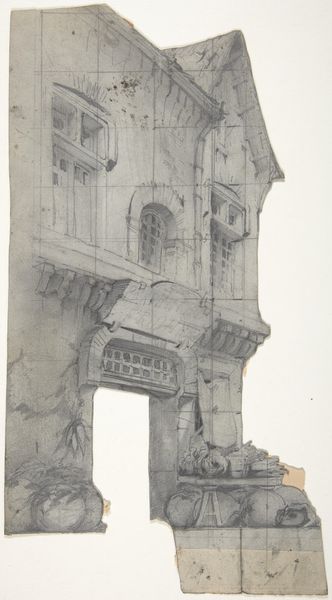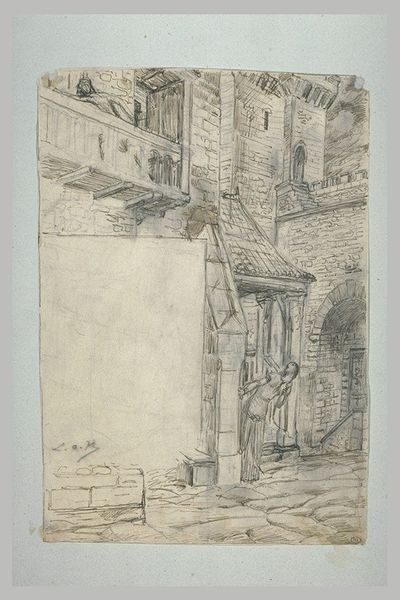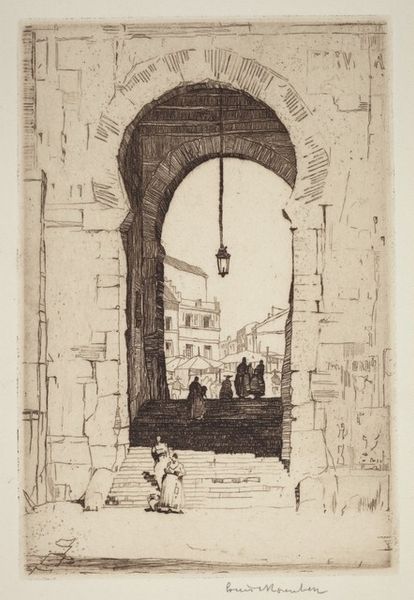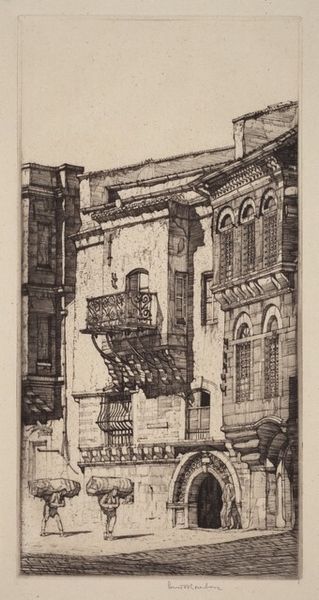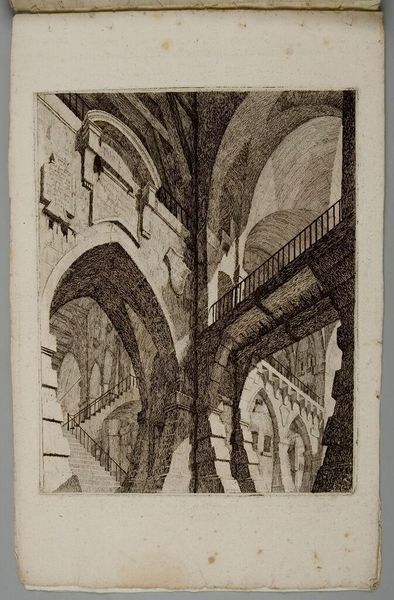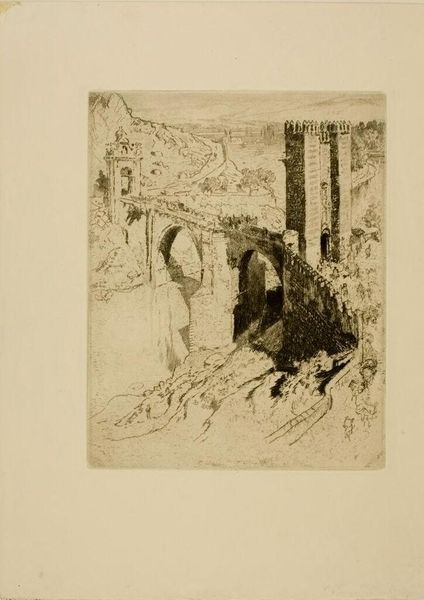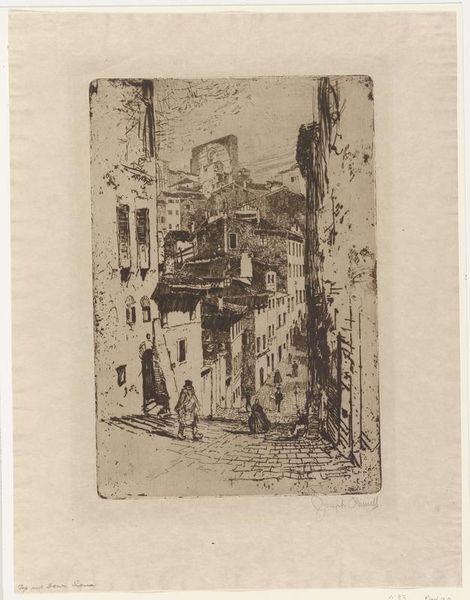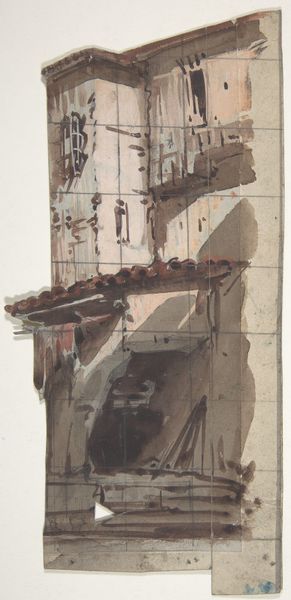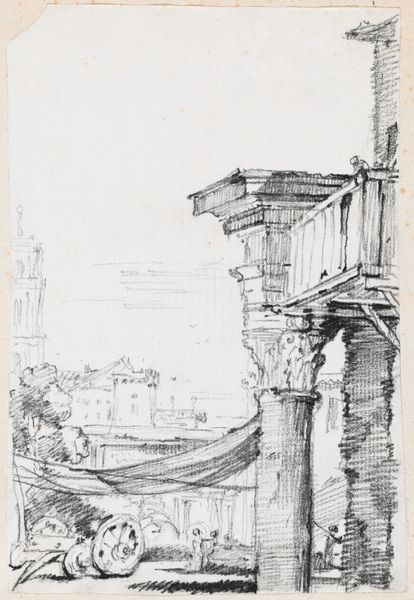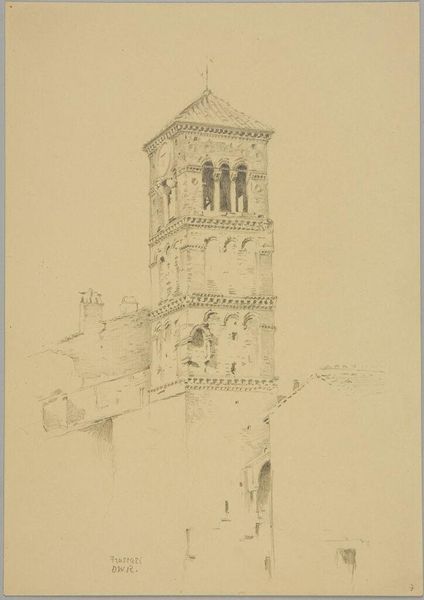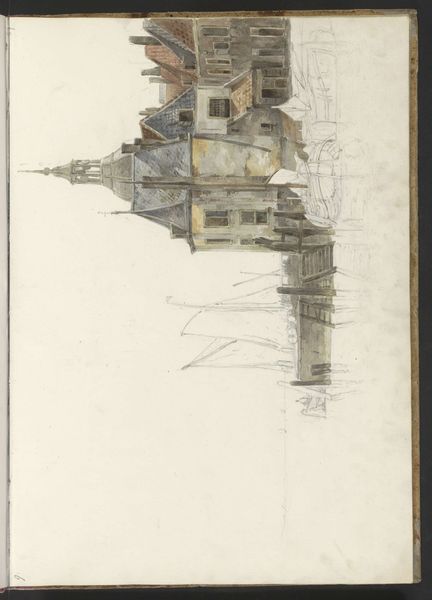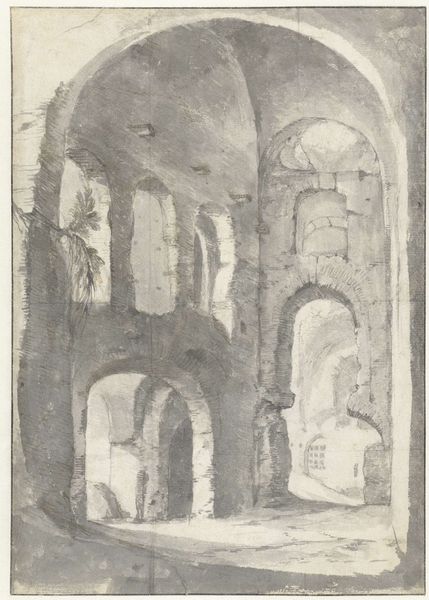
drawing, pencil, pen, architecture
#
drawing
#
landscape
#
pencil
#
line
#
pen
#
history-painting
#
architecture
Copyright: Public domain
Editor: This drawing is "Projet d'illustration pour Macbeth-11" by Luc-Olivier Merson, created using pen, pencil, and drawing. The architectural elements seem to dominate, creating a somewhat oppressive atmosphere, but I also wonder why the artist included the strange yellow section to the side... How would you interpret this work? Curator: From a materialist perspective, consider the drawing's function as a preparatory sketch. Its inherent value lies less in its aesthetic completeness and more in revealing Merson's process, labor, and intention behind a finalized illustration for Macbeth. What type of paper was available to the artist? How does the architecture relate to a rising industrialist society and ideas about the medieval and its forms of labor and authority? Editor: That's interesting. It feels unfinished. Is that area blocked off because it didn't fit in with Merson's final idea, or did it serve as some other production-based purpose? Curator: Precisely! Look at the textures, the ways he renders stone versus what looks like the application of color washes in other areas. Consider what tools were available to create these diverse markings? Understanding his choices in material handling tells us about artistic training and his understanding of artistic value in relation to labour at that time. Editor: I never really thought about the artist's labor itself as part of interpreting a piece, just what the end result conveys. Curator: It shifts the focus from the romanticized 'genius' artist to considering the tangible conditions and context surrounding art production and its inherent consumption in society. That rectangular portion isn't separate from the work of art: it helps reveal how labor creates art. Editor: I see that now. I guess I was so focused on what's *depicted* rather than *how* it was depicted and *why*. Thanks! Curator: Thinking materially gives us new critical perspectives! It lets us go beyond pure aesthetics.
Comments
No comments
Be the first to comment and join the conversation on the ultimate creative platform.
